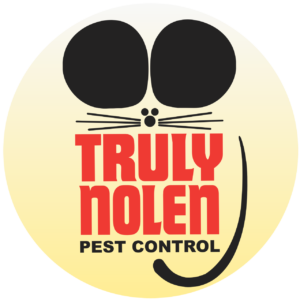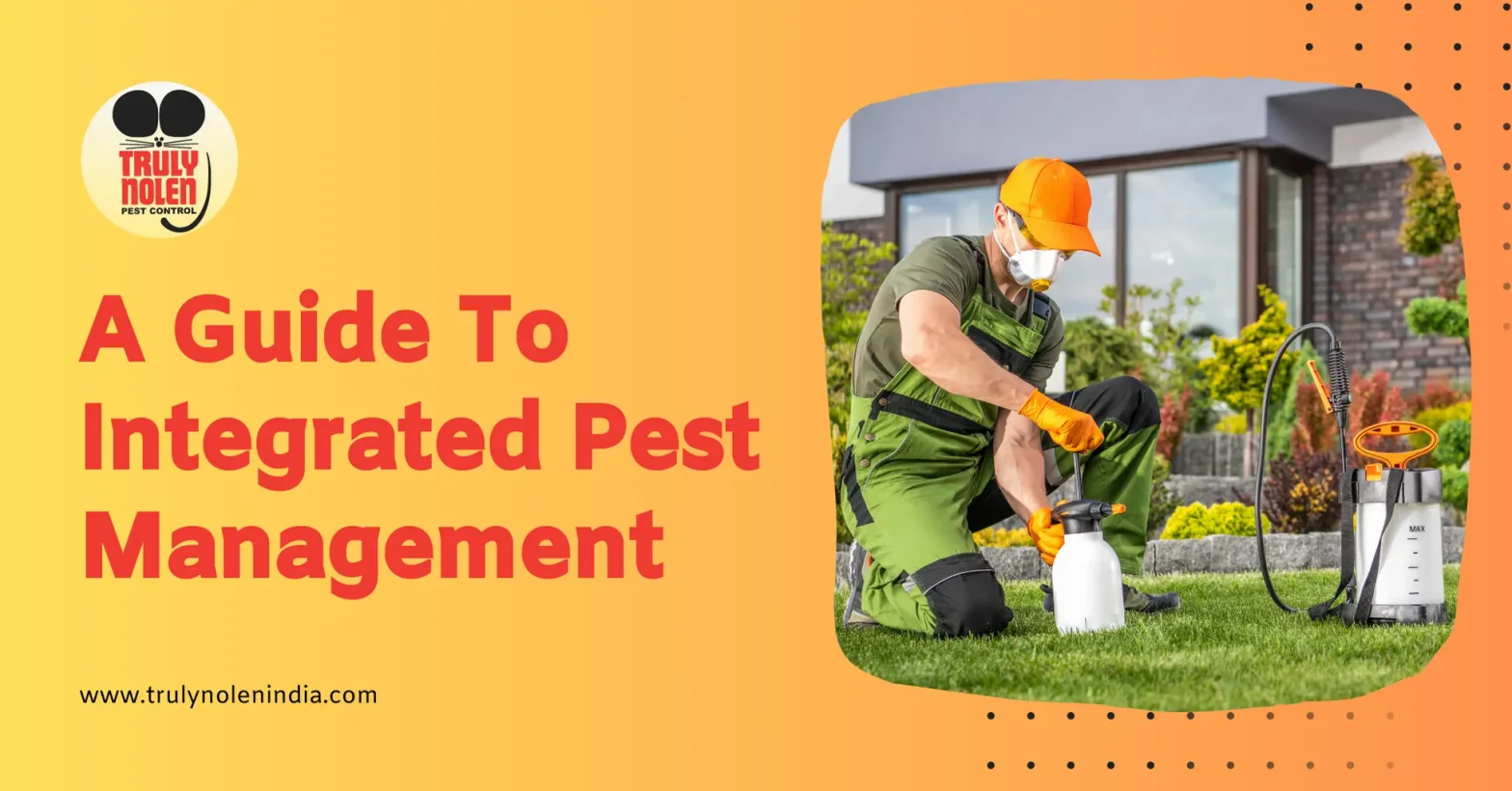Whether you’re running a store or dealing with pests at home – there’s always a better way to manage your pests other than going for harsh and chemical alternatives.
Wondering how? Well, by implementing Integrated Pest Management (IPM).
IPM empowers you to manage pests effectively using sustainable and eco-friendly methods.
We will tell you all about Integrated Pest Management in this blog – but first, let us tell you what IPM is and how it works.
What Is Integrated Pest Management?
Integrated Pest Management (IPM) is an approach to pest control that aims to manage pests with sustainable and environment-friendly procedures. It is based on a comprehensive understanding of the pest’s biology, behavior, and interactions with the environment. The primary goal of IPM is to minimize the impact of pests while ensuring the least possible disruption to the environment and health.
Integrated Pest Management (IPM) is a smart way of dealing with pests. Instead of just using strong chemicals, IPM looks at the bigger picture. It uses science to find the best ways to keep pests away without harming people, our homes, or the environment. The goal is to handle pests in the safest way possible.
What Are The Principles Of Integrated Pest Management?
Here are the principles of Integrated Pest Management:
- Knowledge and Identification
It’s important to understand the pest’s biology and behavior. Proper identification of pests is crucial because different pests may require different control methods.
- Monitoring and Assessment
Regularly inspect and monitor the area for signs of pests. This helps in determining the type and extent of the pest problem, and whether any action is needed.
- Prevention
To ensure a comprehensive approach to pest prevention in both households and commercial areas, it’s essential to adopt several key practices. Firstly, sealing cracks and gaps is crucial to prevent pests from gaining entry. Equally important is maintaining proper sanitation, which involves removing potential food sources that might attract pests. Regular cleaning and reducing clutter can further deter pests by eliminating their potential hiding and breeding spots. Additionally, storing food items properly ensures they are not easily accessible to pests. Lastly, maintaining landscapes by trimming overgrown vegetation and ensuring a clean outdoor environment can significantly reduce pest habitats, further safeguarding the premises from infestations.
- Thresholds
Determine the level at which the pest’s presence will cause economic or aesthetic harm. Not every pest needs to be eradicated completely. Action is taken only when the pest population exceeds this threshold.
- Evaluation
After any control method is implemented, assess the effectiveness of the treatment. This helps in refining strategies for future pest problems.
- Education and Communication
Ensure that everyone involved understands the principles of IPM and their roles in the process. This includes homeowners, building managers, and pest control professionals.
- Integrated Approach
Use a combination of methods for more effective pest control rather than relying on a single pest control method.
- Safety
Ensure that all pest management methods used are safe for humans, pets, and the environment.
What Are The Benefits Of Integrated Pest Management?

Here are the benefits of IPM:
- Reduced Chemical Use
Traditional pest control often relies heavily on the use of chemicals, which can be harmful if overused or misapplied. IPM, on the other hand, prioritizes non-chemical methods, leading to a significant reduction in chemical usage.
This approach ensures that households and commercial spaces are not overly exposed to potentially harmful substances.
As a result, occupants, especially children, the elderly, and pets, are less likely to face health risks associated with chemical exposure.
- Environmental Protection
Excessive use of pesticides in homes and commercial spaces can lead to environmental contamination, especially if they enter water systems or soil. IPM practices reduce the risk of such contamination by minimizing chemical use and promoting eco-friendly methods.
This not only protects the immediate environment but also contributes to broader ecological preservation.
- Economic Benefits
While some IPM methods might have an initial cost, they often lead to long-term savings by reducing the need for repeated treatments. Preventative measures in IPM can also reduce potential property damage from pests, saving homeowners and businesses repair costs.
Additionally, businesses can market their spaces as eco-friendly, potentially attracting environmentally-conscious customers.
- Human Health
Chemical pesticides can pose health risks, including allergic reactions, respiratory issues, and other health complications. By reducing the reliance on these chemicals, IPM ensures a safer living and working environment.
This is especially crucial in commercial spaces like offices, where a diverse group of people spends extended periods.
- Resistance Management
Pests can develop resistance to chemicals if the same ones are used repeatedly. IPM’s multi-faceted approach reduces the likelihood of resistance, ensuring that control methods remain effective over time.
This is crucial for long-term pest management, especially in commercial spaces that can’t afford recurring pest issues.
- Improved Indoor Quality
Effective pest management ensures that spaces remain clean and free from pest-related damages, leading to a better indoor environment. Reduced chemical use also means fewer toxins in the air, contributing to better indoor air quality.
This can be especially beneficial for businesses that prioritize the well-being and comfort of their employees and customers.
- Flexibility
Every household or commercial space is unique, with its own set of challenges. IPM is not a one-size-fits-all approach but can be tailored to specific needs. This adaptability ensures that pest control solutions are effective and suited to the specific environment.
It allows for a combination of methods, from physical barriers to biological controls, depending on the situation.
- Knowledge-based Approach
IPM is not just about action but also understanding. It emphasizes the importance of knowing pest behaviors, life cycles, and preferences. This knowledge allows for more targeted and effective interventions.
Homeowners and businesses can make informed decisions, leading to better long-term outcomes.
- Sustainability
IPM promotes methods that are not only effective in the short term but also sustainable in the long run. This ensures that households and commercial spaces remain safe without constantly resorting to drastic measures.
Sustainable practices also mean less environmental impact and a healthier living and working environment.
- Regulatory and Market Compliance
As environmental concerns grow, regulations around chemical use in commercial spaces might become stricter. IPM ensures that businesses remain compliant with these regulations.
Moreover, businesses can leverage their IPM practices as a selling point, appealing to eco-conscious consumers.
IPM strikes a delicate balance between effectively managing pests and causing minimal disruption to daily activities. The careful selection of control methods and their targeted application ensures that the pest control process is unobtrusive.
What Are The Different Methods Of IPM?

Here are the different methods of IMP:
- Inspection
Regular inspection plays the role of a pest detective, helping us identify any pest issues and understanding how many pests are causing trouble. By keeping an eye on our surroundings, we can catch pest problems early and take action before they become big issues.
- Sanitation
A clean and tidy environment is a significant aspect of IPM. When we maintain hygiene, pests lose access to their food sources and places to live and breed. By practicing some sanitary measures, you can discourage pests from taking up residence.
- Exclusion
You can seal up cracks and holes to keep pests out, like building a protective barrier. When pests find their previous entryways blocked, it will take them quite some time to discover a new way in.
- Biological Control
Nature has its own pest fighters! In IPM, we introduce helpful insects or critters that are natural enemies of pests. These good bugs aren’t harmful, and help you keep pest populations in check without using harmful chemicals.
- Traps and Barriers
Traps and barriers are physical devices that either capture pests or create obstacles to prevent them from reaching their targets.
- Cultural Control
This method involves changing our habits and practices to make our spaces less attractive to pests. For example, adjusting watering and pruning routines for plants or modifying storage practices to deter pests.
- Chemical Control (as a last resort)
Sometimes, when all other methods are insufficient, we may need to use a special spray or powder to address a pest problem. However, in IPM, chemical control is a last resort, and it’s done carefully and responsibly to minimize risks to human health and the environment.
What Are The Techniques Of Integrated Pest Management?

Here are some key techniques used in IPM:
- Inspecting the Interior and Exterior of the Facility
Regular and thorough inspections are essential for early detection of pests and potential entry points. IPM practitioners carefully examine both the inside and outside of the facility, identifying areas where pests may hide, breed, or gain access.
- Pest Identification and Activity Analysis
IPM professionals closely observe and analyze pest behavior, life cycles, and activity patterns. Understanding the biology and habits of pests helps in selecting the most appropriate control methods to disrupt their life cycles and minimize their impact.
- Treatment of Affected Areas to Eliminate and Control Pests
Once pests are identified and their activity levels assessed, IPM practitioners apply suitable control measures. These methods may include using eco-friendly pesticides, trapping, or employing physical barriers to prevent pests from accessing vulnerable areas.
IPM focuses on using the least toxic approach first, resorting to chemical pesticides only when necessary and in a targeted manner.
- Knowledge About Preventative Measures
IPM practitioners not only implement pest control measures but also educate facility managers, staff, and occupants about the importance of cleanliness, sanitation, and preventive measures.
By promoting best practices, such as proper waste management and maintenance, IPM helps create an environment that is less suitable to pests.
- Monitoring and Ongoing Evaluation
IPM is an ongoing process that involves continuous monitoring and evaluation. IPM practitioners regularly revisit the facility to assess the effectiveness of control measures and identify any changes in pest populations.
Sustainable Pest Management With Truly Pest Solution!

Now you know how Integrated Pest Management (IPM) works – and offers a smart and sustainable solution for managing pests in various settings. With a focus on non-toxic methods, IPM ensures a safe environment for everyone, from humans to the delicate ecosystem.
However, from regular inspections to using natural enemies and cultural practices – it takes professional expertise and experience to implement every IPM method effectively. That’s where We, at Truly Pest Solution, come in with our professional tools, years of experience, environment-friendly solutions and expert techniques.
We’re there for all your pest control needs!


Leave a Reply